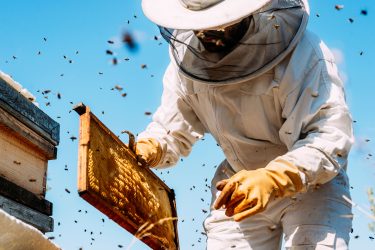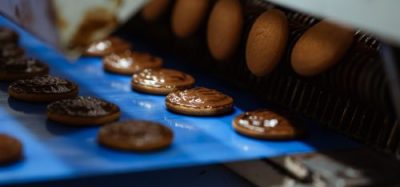From beehive to jar – honey authenticity explained
- Like
- Digg
- Del
- Tumblr
- VKontakte
- Buffer
- Love This
- Odnoklassniki
- Meneame
- Blogger
- Amazon
- Yahoo Mail
- Gmail
- AOL
- Newsvine
- HackerNews
- Evernote
- MySpace
- Mail.ru
- Viadeo
- Line
- Comments
- Yummly
- SMS
- Viber
- Telegram
- Subscribe
- Skype
- Facebook Messenger
- Kakao
- LiveJournal
- Yammer
- Edgar
- Fintel
- Mix
- Instapaper
- Copy Link
Posted: 26 March 2021 | Rick Mumford | No comments yet
Rick Mumford from the FSA explores the honey supply chain and the unique issues that can put it at risk of food fraud.


Honey is a natural complex mixture of different sugars produced entirely by bees, with nothing added or taken away. It’s on breakfast tables across the country, ready to be stirred into porridge or poured onto yogurt, but how do you know that the honey you’re spreading onto your toast is genuine?
There are strict laws in place which set high standards for the composition and labelling of honey products on sale in the UK. Local authorities are responsible for the enforcement of food law and the Food Standards Agency (FSA) issues advice to ensure consistency in approach across the country.
The risk of honey fraud
While there is no evidence that any honey on sale in the UK is unsafe, it is a product that can be at risk of fraud. Products which declare a premium status, have a high price by weight, have complex supply chains or are subject to a spike in demand, can be particularly vulnerable to fraudsters.
Some honey products will fall into one or more of these categories. This may be due to their global supply chains or the premium status of high-value products such as manuka honey.
Authenticity
With such a vast array of honey products available to consumers, no single test can definitively determine a product’s authenticity. However, there are a range of analytical techniques that can be applied to honey to check its composition. This can be from well-established official methods, to more recently developed advanced ‘fingerprinting’ tools, such as those using nuclear magnetic resonance spectroscopy (NMR).
Detecting certain types of adulteration, for example the addition of cane or beet sugars, is challenging. This is especially true for beet sugar addition because bees generally forage on plants that use the same photosynthetic pathway as beet sugars. This makes it difficult for traditional tests based on isotopic differences to provide effective results.
NMR can be helpful in this instance, providing the sector a sophisticated analytical chemistry tool that offers a detailed chemical profile of the food. This profile is akin to a ‘chemical fingerprint’, specific to the sample that has been tested and can be compared with the fingerprint from other sample results enabling the user to assess consistency.
Traceability
However, interpretation of results depends on comparison against a reference database of authenticated samples, such as ones of known, verifiable origin and type.


Because this is not always the case, the FSA recommends that local authorities do not take enforcement action on the basis of NMR results alone. Instead, they should apply a weight of evidence approach.
This tactic includes gathering information on product traceability – from beehive to jar – and results from any other testing that has been undertaken. This can also involve carrying out follow-up discussions with the relevant business.
The honey supply chain
We are working with partners across government to improve understanding and knowledge of honey testing methods and the honey supply chain among stakeholders.
Together with Defra, we are exploring approaches which will provide additional assurance for testing methods, such as NMR, which rely on underpinning databases. We will also be supporting further work on guidance for applying a weight of evidence approach.
As always, consumers are at the heart of everything we do. Our aim is to maintain consumer confidence, reassure businesses involved in honey supply chains and reduce any risk of food fraud.
We are continuing to work together with the honey industry to ensure that the honey you enjoy is safe, authentic and genuine.
About the author
Rick Mumford is the Head of Science, Evidence & Research at the FSA, where he leads a multi-disciplinary team of over 90 scientists, analysts and social researchers, providing expert risk assessment and evidence to help ensure the safety and integrity of food.
A plant virologist by training, he has over 20 years’ experience as a leading applied scientist and is an author on more than 75 publications.
He is also a visiting Professor of Practice at Newcastle University and a fellow of the Royal Society of Biology.
Related topics
Equipment, Food Fraud, Ingredients, Nuclear Magnetic Resonance (NMR), Supply chain, Technology & Innovation, Traceability









